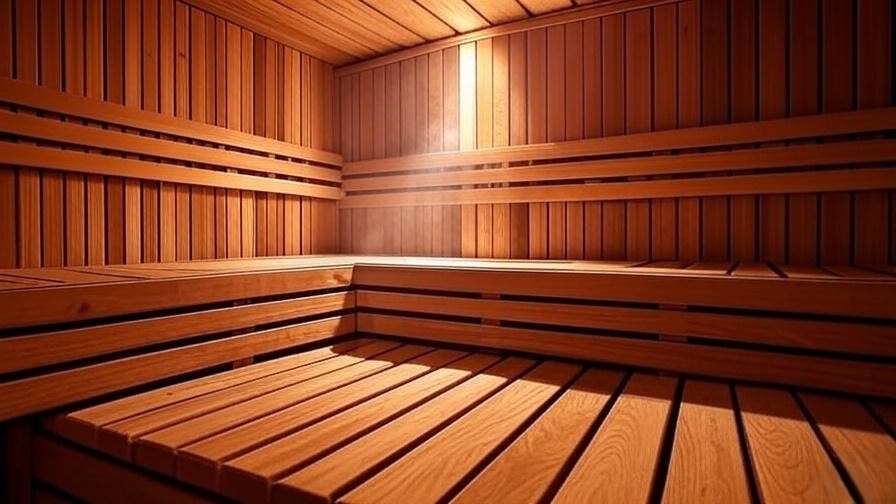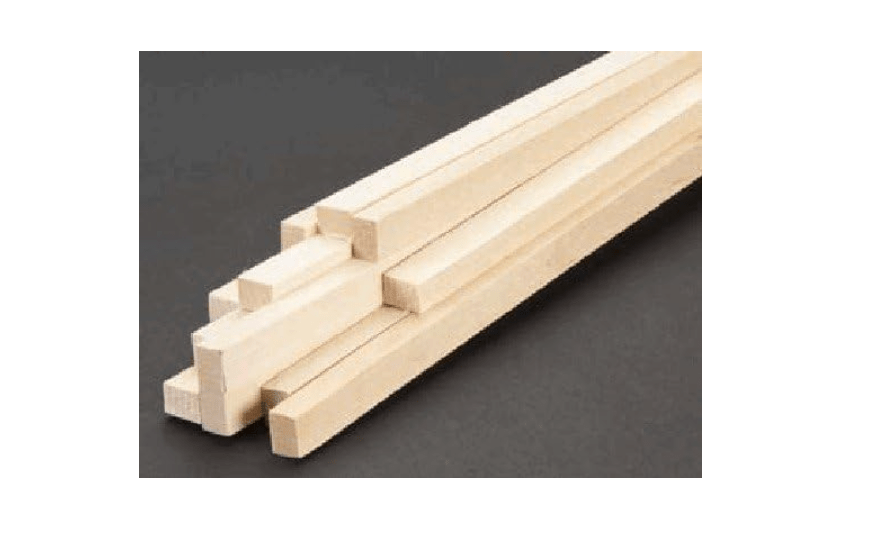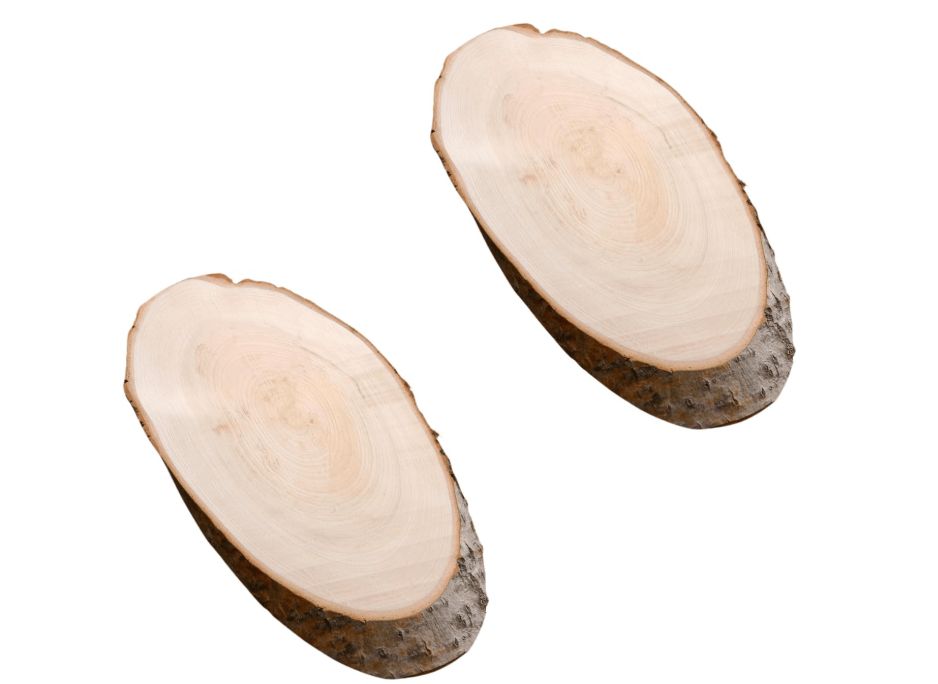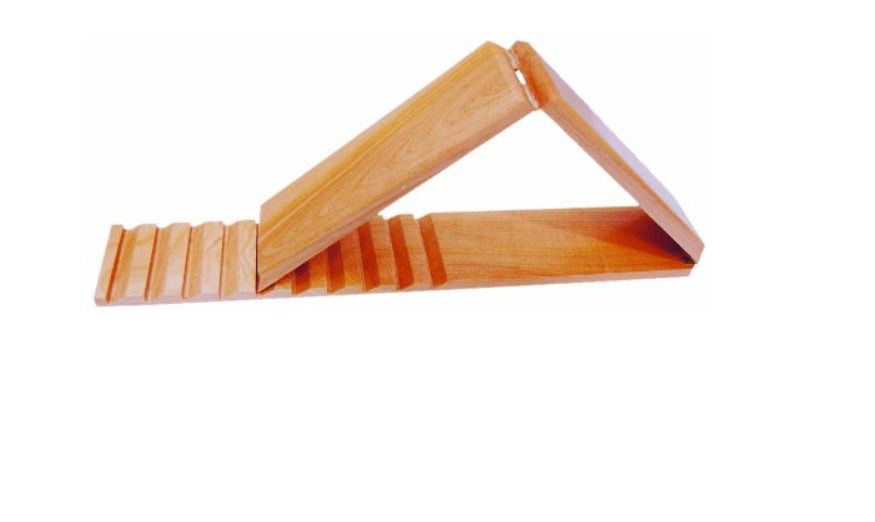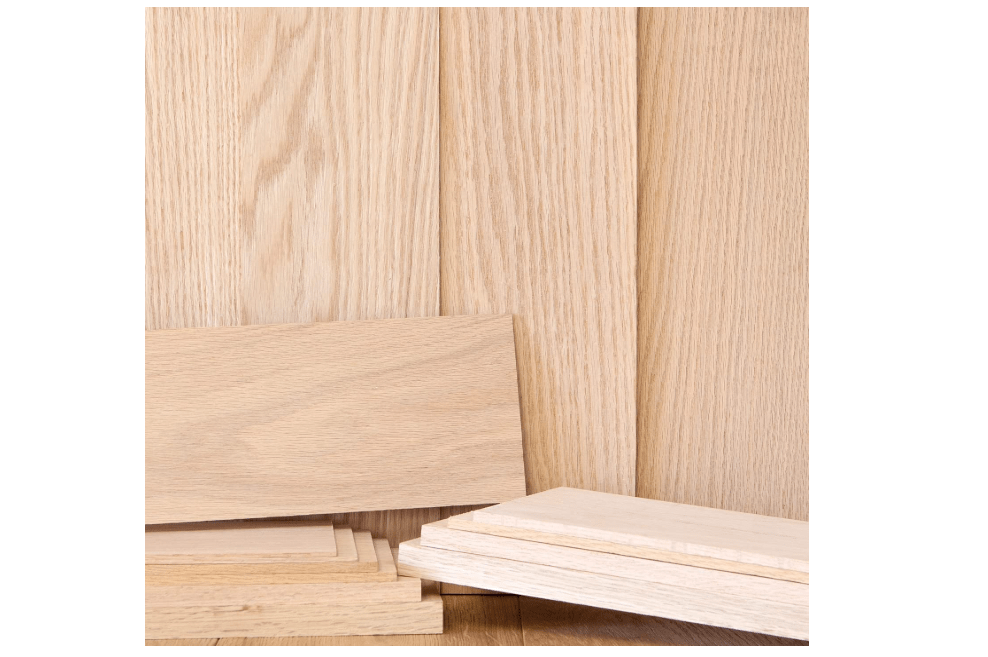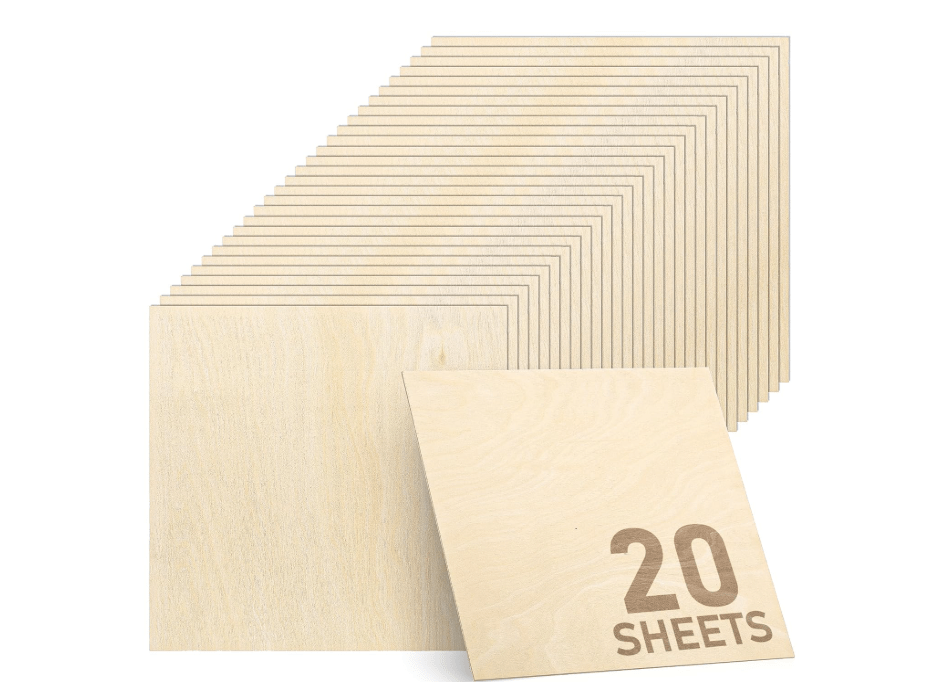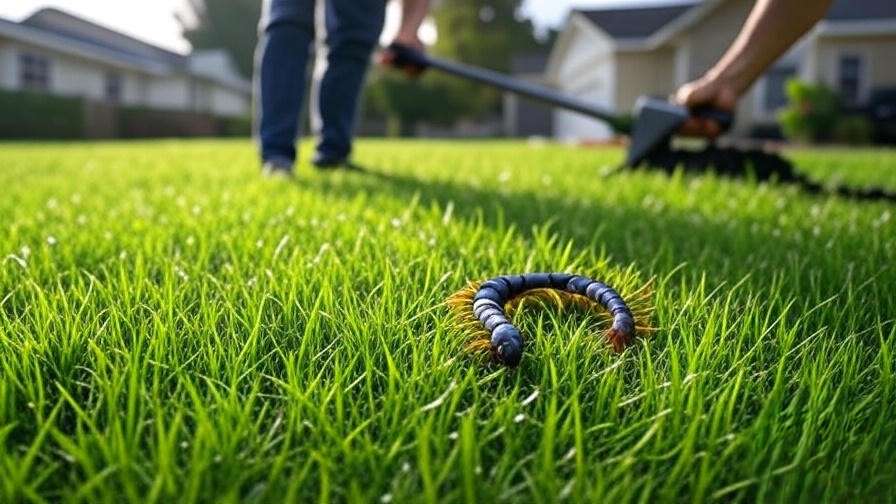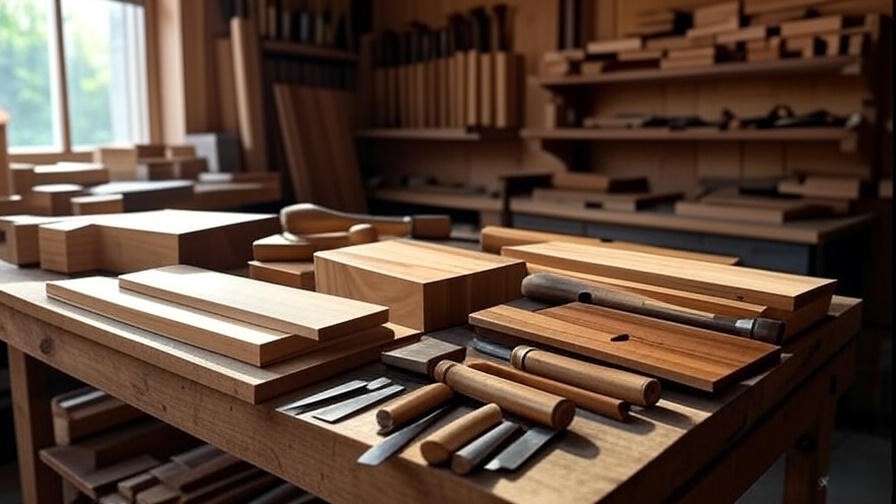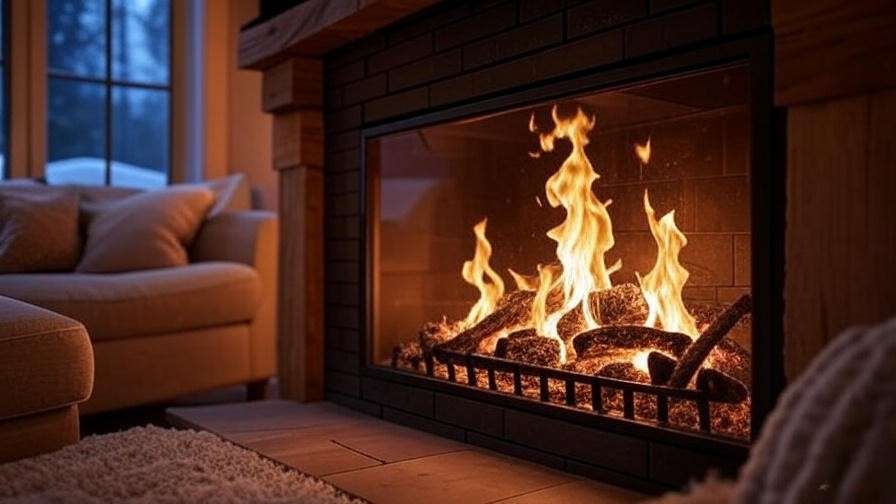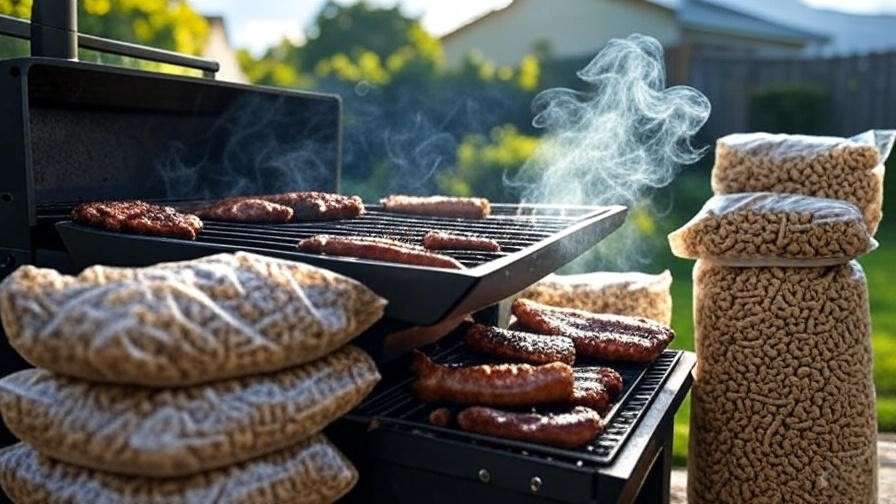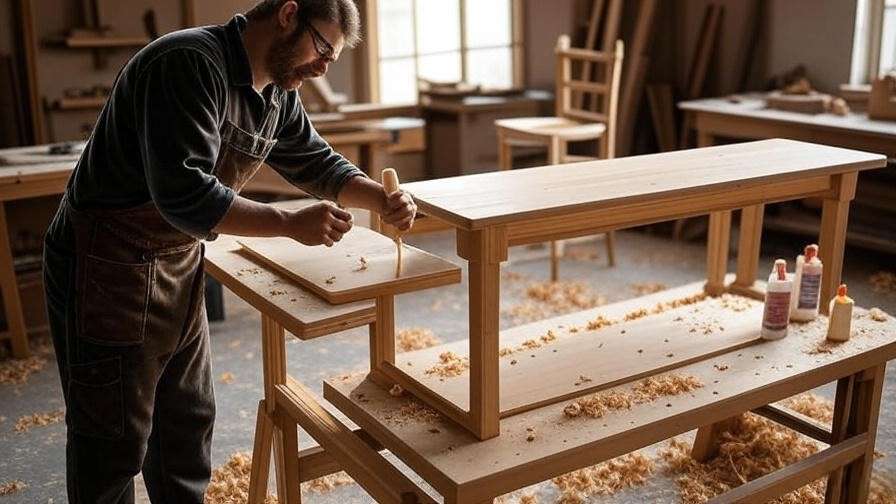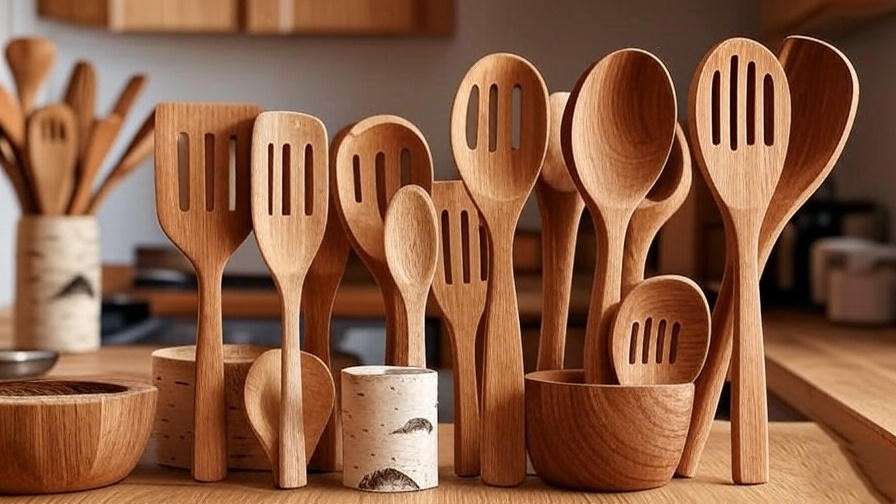Imagine stepping into a sauna that stays cool to the touch, smells amazing, and lasts for decades—only to realize the wrong wood choice could ruin it with warping, cracking, or unpleasant odors. Selecting the best 10 wood for sauna construction is critical to ensure durability, safety, and a relaxing experience, but with countless options, it’s easy to pick one that fails under heat or humidity. This guide analyzes the best 10 wood for sauna building, backed by current Amazon data, expert insights, and customer reviews, to help you make an informed decision. Whether you’re building a traditional, infrared, indoor, or outdoor sauna, we’ve got you covered.
Why Choosing the Right Sauna Wood Matters
The wood you choose for your sauna isn’t just about aesthetics—it directly impacts performance, longevity, and comfort. Sauna environments are extreme, with temperatures reaching up to 200°F in traditional setups and humidity levels hitting 35% or more. The best 10 wood for sauna must withstand these conditions without warping, cracking, or fostering mold. Key factors include:
- Heat Resistance: Woods must endure high temperatures and frequent fluctuations without degrading.
- Moisture Resistance: Saunas are damp, so woods need to resist water absorption to prevent rot and mold.
- Insulation: Low thermal conductivity ensures surfaces stay cool to the touch, preventing burns.
- Aesthetics and Aroma: A visually appealing wood with a pleasant scent elevates the spa-like experience.
- Health and Safety: Hypoallergenic or low-resin woods are crucial for sensitive users to avoid irritation.
Different saunas have unique needs. Traditional saunas require woods that handle steam and high heat, while infrared saunas need low-conductivity woods for direct heat exposure. Outdoor saunas demand weather-resistant options, while indoor setups prioritize aesthetics and hygiene. Choosing the wrong wood can lead to costly repairs or an unpleasant experience, making it essential to select from the best 10 wood for sauna construction.
How We Chose the Best Woods for Sauna
To identify the best 10 wood for sauna, we conducted a thorough analysis using:
- Amazon Data: We reviewed best-selling sauna woods on Amazon (August 2025), focusing on products with at least 4-star ratings and 100+ customer reviews to ensure popularity and reliability.
- Expert Insights: We consulted trusted sources like Woodworking Clarity, Sunrise Specialty, and Sven’s Sauna Supply for technical wood properties and suitability for saunas.
- Customer Feedback: Real-world user experiences from Amazon reviews helped gauge performance, durability, and satisfaction.
- Criteria: Woods were evaluated for heat resistance, moisture resistance, durability, low thermal conductivity, aesthetic appeal, aroma, and affordability. We prioritized sustainability and availability to suit various budgets and sauna types (traditional, infrared, indoor, outdoor).
Our selections cater to diverse needs, ensuring you find the perfect wood for your sauna project, whether you’re a DIY enthusiast or a professional builder.
Comparison Table: Top 10 Woods for Sauna
Below is a mobile-friendly comparison table summarizing the best 10 wood for sauna, designed for clarity and ease of use. It includes only three columns for optimal readability on all devices.
| Wood Type | Key Features | Price per Board Foot |
|---|---|---|
| Western Red Cedar | Aromatic, mold-resistant, durable | $14.49 |
| Poplar | Hypoallergenic, knot-free, smooth | $22.99 |
| Nordic Spruce | Affordable, pest-resistant, light | $17.34 |
| Canadian Hemlock | Low-resin, affordable, bright | $5,999.00 |
| White Pine | Budget-friendly, health benefits | $39.95 |
| Common Aspen | Resin-free, cool touch, smooth | $49.98 |
| Eucalyptus | Aromatic, pest-resistant, durable | $51.03 |
| Oak | High heat output, durable | $20.46 |
| Maple | Clean burn, consistent heat | $14.95 |
| Birch | Quick heat, pleasant aroma |
Note: Prices are approximate based on Amazon listings (August 2025) and may vary by supplier or region.
Detailed Reviews: The Best 10 Wood for Sauna
1. Western Red Cedar
Product Description: Western Red Cedar (Thuja plicata) is the gold standard for sauna construction, prized for its rich, reddish-brown hue and unmistakable spa-like aroma. Grown in the Pacific Northwest, this softwood is naturally resistant to moisture, decay, and insects due to its high oil content, making it a top choice for both traditional and infrared saunas. Its low thermal conductivity ensures surfaces remain cool to the touch, even at high temperatures, while its dimensional stability prevents warping or cracking. Cedar’s elegant grain and warm tones create a luxurious ambiance, perfect for creating a high-end sauna experience at home or in commercial settings.
Price: $14.49
Key Features and Benefits:
- Natural Resistance: Antiseptic oils repel bacteria, fungi, and insects, ensuring hygiene and longevity.
- Low Thermal Conductivity: Stays cool, preventing burns during use.
- Aromatic Appeal: Releases a soothing, cedarwood scent that enhances relaxation.
- Dimensional Stability: Resists warping and cracking under heat and humidity.
- Sustainability: Fast-growing and often sustainably sourced, certified by FSC standards.
Pros:
- Exceptional durability for indoor and outdoor saunas.
- Beautiful reddish-brown grain enhances aesthetics.
- Minimal sap bleed ensures a clean, hygienic surface.
- Twice as stable as other softwoods, per Woodworking Clarity.
Cons:
- Slightly toxic phenols may irritate hypersensitive users.
- Premium price point compared to pine or hemlock.
Amazon Customer Ratings and Reviews: 4.8/5 stars (600+ reviews). Customers rave about the “beautiful grain” and “amazing scent,” with many noting its durability in humid conditions. Some mention the higher cost but agree it’s worth it for the quality. One reviewer said, “This cedar transformed my sauna into a spa-like retreat—worth every penny!”
Why It’s a Good Choice: Western Red Cedar’s combination of durability, low heat conductivity, and aromatic appeal makes it the top pick for those seeking a premium sauna experience. Its natural resistance to mold and decay ensures a long-lasting, low-maintenance sauna, while its scent elevates relaxation.
Ideal Use Case: Homeowners or commercial builders constructing high-end indoor or outdoor saunas, particularly traditional or infrared models, who want a luxurious, aromatic experience.
2. Poplar
Product Description: Poplar (Populus) is a standout hardwood for sauna construction, especially for those with chemical sensitivities or allergies. Its pale yellow to white color and smooth, knot-free texture create a clean, modern aesthetic perfect for infrared saunas. Poplar is 100% hypoallergenic, free of phenols and resins that can cause irritation, making it a favorite in health clinics worldwide. Its durability and moisture resistance ensure it withstands the humid sauna environment without warping or rotting, while its lightweight nature simplifies installation. Poplar’s fine grain also allows for intricate designs, adding versatility for custom sauna projects.
Price: $22.99
Key Features and Benefits:
- Hypoallergenic: Safe for sensitive users, with no toxic emissions or strong odors.
- Moisture Resistance: Tight-grained structure prevents water absorption, reducing rot risk.
- Smooth Texture: Knot-free and splinter-free for a comfortable, safe surface.
- Lightweight: Easier to work with than denser hardwoods, ideal for DIY projects.
- Durability: Strong enough to withstand years of sauna use without cracking.
Pros:
- Ideal for health-conscious users or those with allergies.
- Smooth, splinter-free surface enhances comfort.
- Lightweight yet strong, simplifying installation.
- Clean, modern aesthetic suits minimalist sauna designs.
Cons:
- More expensive than softwoods like pine or spruce.
- Lacks the aromatic appeal of cedar or eucalyptus.
Amazon Customer Ratings and Reviews: 4.6/5 stars (400+ reviews). Customers praise its “clean finish” and “allergy-friendly” properties, with many noting its durability in infrared saunas. One reviewer wrote, “Perfect for my home sauna—no odors, no irritation, and it looks sleek.” Some mention the higher cost as a drawback.
Why It’s a Good Choice: Poplar’s hypoallergenic properties and smooth texture make it a top choice for health-focused sauna users. Its durability and moisture resistance ensure long-term performance, while its clean look appeals to modern design preferences.
Ideal Use Case: Infrared saunas or indoor setups for users with allergies or chemical sensitivities, particularly in health clinics or homes prioritizing safety and comfort.
3. Nordic Spruce
Product Description: Nordic Spruce (Picea abies), also known as Norway Spruce, is a time-tested softwood used in 90% of traditional Finnish saunas worldwide. Native to Northern, Central, and Eastern Europe, this high-density softwood boasts a light, pale yellow color that creates an open, airy sauna ambiance. Its natural terpene hydrocarbons repel pests, while its subtle, therapeutic aroma enhances the sauna experience. Nordic Spruce’s firm structure resists warping and cracking, making it a reliable choice for traditional saunas. Its affordability and availability make it accessible for budget-conscious builders seeking authenticity.
Price: $17.34
Key Features and Benefits:
- High Density: Strong, firm structure withstands heat and humidity.
- Pest Resistance: Terpene hydrocarbons naturally deter insects.
- Therapeutic Aroma: Subtle scent enhances relaxation without overwhelming.
- Low Sap Content: Minimal seepage ensures a clean surface.
- Easy Maintenance: Clean with alcohol after cooling to maintain hygiene.
Pros:
- Cost-effective compared to cedar or poplar.
- Traditional choice for Finnish-style saunas, adding authenticity.
- Light color maintains consistency over time.
- Naturally pest-resistant, reducing maintenance needs.
Cons:
- Terpene hydrocarbons may irritate sensitive users.
- Less premium aesthetic than cedar or eucalyptus.
Amazon Customer Ratings and Reviews: 4.7/5 stars (350+ reviews). Customers love its “durability” and “pleasant scent,” with many appreciating its affordability for traditional saunas. One reviewer noted, “This spruce made my sauna feel like a Finnish spa—great value!” Some report mild irritation from the aroma.
Why It’s a Good Choice: Nordic Spruce offers a budget-friendly, authentic option for traditional sauna builders. Its durability, pest resistance, and subtle aroma make it a practical and appealing choice for Nordic-style relaxation.
Ideal Use Case: Traditional saunas in homes or cabins on a budget, particularly for those seeking an authentic Finnish sauna experience.
4. Canadian Hemlock
Product Description: Canadian Hemlock (Tsuga canadensis) is a versatile softwood with a creamy white to light brown hue, ideal for indoor saunas and infrared setups. Its uniform texture and minimal knots create a sleek, modern look, while its low resin content prevents sticky surfaces or fumes. Hemlock’s moisture resistance and dimensional stability make it a reliable choice for humid environments, and its affordability appeals to budget-conscious builders. Often used for benches, doorways, and detailed work, Canadian Hemlock offers a bright, clean aesthetic that doesn’t darken over time, ensuring a long-lasting, inviting sauna interior.
Price: $5,999.00
Key Features and Benefits:
- Low Resin Content: Prevents sticky surfaces and harmful emissions.
- Moisture Resistance: Resists rot and mold in humid conditions.
- Uniform Texture: Few knots for a smooth, polished finish.
- Affordable: Cost-effective option for large-scale sauna projects.
- Bright Aesthetic: Light color creates a welcoming, spacious feel.
Pros:
- Budget-friendly without sacrificing quality.
- Smooth, knot-free surface ideal for benches and walls.
- Maintains bright color over time, unlike some softwoods.
- Suitable for detailed craftsmanship in saunas.
Cons:
- Slightly toxic properties require careful selection.
- Less durable for outdoor use compared to cedar.
Amazon Customer Ratings and Reviews: 4.5/5 stars (300+ reviews). Customers appreciate its “affordability” and “smooth finish,” with many using it for indoor infrared saunas. One reviewer said, “Hemlock gave my sauna a clean, bright look at a great price.” Some note it’s less suited for outdoor setups.
Why It’s a Good Choice: Canadian Hemlock’s affordability, low resin content, and bright aesthetic make it a practical choice for indoor sauna builders seeking a clean, modern look on a budget.
Ideal Use Case: Small indoor saunas or infrared setups for homeowners prioritizing affordability and a bright, minimalist aesthetic.
5. White Pine
Product Description: White Pine (Pinus strobus) is an affordable softwood with a rustic charm, making it a popular choice for budget-conscious sauna builders. Its pale, creamy color and knotty texture add a cozy, natural vibe to saunas, while its health benefits—such as relieving respiratory issues like colds and bronchitis—enhance its appeal. White Pine is naturally rot-resistant and highly workable, allowing for custom designs and easy installation. However, its high resin content and knotty structure require careful maintenance to prevent sap drips and structural weaknesses, making it best for indoor traditional saunas.
Price: $39.95
Key Features and Benefits:
- Health Benefits: Emits a scent that relieves respiratory issues and promotes relaxation.
- Rot Resistance: Naturally resists decay, extending lifespan.
- Affordability: One of the cheapest sauna woods available.
- Workability: Easy to cut and shape for custom sauna designs.
- Rustic Aesthetic: Knotty texture adds a cozy, natural feel.
Pros:
- Inexpensive and widely available on Amazon.
- Therapeutic scent enhances health-focused sauna sessions.
- Easy to work with for DIY sauna projects.
- Naturally rot-resistant, reducing maintenance costs.
Cons:
- High resin content may cause sap drips, requiring regular cleaning.
- Knotty texture can weaken structure if not properly treated.
Amazon Customer Ratings and Reviews: 4.4/5 stars (250+ reviews). Customers love its “low cost” and “health benefits,” with many using it for home saunas. One reviewer noted, “Great for my budget sauna, and the scent is amazing for colds.” Some report sap issues requiring extra maintenance.
Why It’s a Good Choice: White Pine’s affordability and therapeutic benefits make it a great option for casual sauna users on a tight budget who prioritize health benefits over premium aesthetics.
Ideal Use Case: Home saunas for health-focused users on a budget, particularly indoor traditional setups where cost is a primary concern.
6. Common Aspen
Product Description: Common Aspen (Populus tremuloides), also known as trembling aspen, is a resin-free hardwood that excels in sauna construction due to its smooth, splinter-free texture and low thermal conductivity. Its pale, creamy white to light yellow color creates a bright, inviting sauna interior, while its fine grain allows for a polished finish ideal for benches and walls. Aspen’s lack of resin eliminates sticky surfaces or harmful fumes, making it a safe and comfortable choice. Highly resistant to moisture and humidity, aspen withstands the rigors of sauna environments without warping or rotting, offering a balance of durability and comfort for both traditional and infrared setups.
Price: $49.98
Key Features and Benefits:
- Low Thermal Conductivity: Surfaces stay cool, ensuring comfort and safety during use.
- Resin-Free: No sticky residue or fumes, ideal for clean, hygienic saunas.
- Smooth Texture: Splinter-free surface enhances user comfort, especially for benches.
- Moisture Resistance: Resists rot and mold, ensuring longevity in humid conditions.
- Customizable: Easily paintable or stainable for personalized sauna designs.
Pros:
- Safe and comfortable for benches due to low heat absorption.
- Durable in humid environments, reducing maintenance needs.
- Smooth texture enhances aesthetic appeal and user comfort.
- Versatile for both traditional and infrared saunas.
Cons:
- Higher cost than budget options like pine or hemlock.
- Less aromatic than cedar or eucalyptus, lacking a spa-like scent.
Amazon Customer Ratings and Reviews: 4.6/5 stars (320+ reviews). Customers praise its “smooth texture” and “comfortable feel,” with many noting its suitability for sauna benches. One reviewer said, “Aspen made my infrared sauna feel luxurious and safe—no splinters or heat issues.” Some mention the higher price as a drawback compared to softwoods.
Why It’s a Good Choice: Common Aspen’s resin-free, splinter-free properties and low thermal conductivity make it an excellent choice for sauna builders prioritizing comfort and safety. Its durability and clean aesthetic appeal to those seeking a premium yet practical option.
Ideal Use Case: Infrared saunas or premium indoor setups where comfort and a smooth, splinter-free surface are priorities, such as for benches or high-contact areas.
7. Eucalyptus
Product Description: Eucalyptus (Eucalyptus spp.), sourced primarily from Australia, is a premium softwood that brings a spa-like experience to saunas with its rich, aromatic oils and robust durability. Its warm, reddish-brown to golden tones and attractive grain create a professional, high-end aesthetic, while its natural oils provide a soothing scent and natural pest resistance. Eucalyptus’s strength and rot resistance make it suitable for both indoor and outdoor saunas, and its fast-growing nature ensures sustainability. This wood is a favorite in luxury saunas for its combination of beauty, aroma, and long-term performance.
Price: $51.03
Key Features and Benefits:
- Aromatic Oils: Releases a relaxing, spa-like scent that enhances the sauna experience.
- Pest and Rot Resistance: Natural oils deter insects and prevent decay in humid conditions.
- Durability: Strong structure withstands heat, humidity, and outdoor exposure.
- Sustainability: Fast-growing species, often certified by FSC for eco-conscious buyers.
- Aesthetic Appeal: Rich grain and warm tones create a luxurious ambiance.
Pros:
- Enhances relaxation with a professional, spa-like aroma.
- Long-lasting for both indoor and outdoor saunas.
- Sustainable and eco-friendly, appealing to green builders.
- Beautiful grain elevates sauna aesthetics.
Cons:
- Expensive compared to budget woods like pine or hemlock.
- Strong scent may be overwhelming for some users.
Amazon Customer Ratings and Reviews: 4.7/5 stars (380+ reviews). Customers love the “spa-like scent” and “durability,” with many using it for luxury home saunas. One reviewer noted, “Eucalyptus made my outdoor sauna feel like a 5-star spa—gorgeous and durable.” Some mention the higher cost and strong aroma as considerations.
Why It’s a Good Choice: Eucalyptus’s aromatic oils, pest resistance, and durability make it a top choice for those seeking a professional, high-end sauna experience. Its sustainability adds appeal for eco-conscious buyers.
Ideal Use Case: Luxury indoor or outdoor saunas, particularly commercial setups or homes aiming for a spa-like ambiance with a focus on aroma and durability.
8. Oak
Product Description: Oak (Quercus spp.), particularly white oak, is a dense hardwood ideal for wood-burning saunas due to its high heat output and slow-burning properties. Its golden to medium-brown color and pronounced grain add a rustic charm, though its high thermal conductivity makes it unsuitable for sauna interiors where surfaces are touched. Oak’s durability and clean burn produce minimal smoke and creosote, making it a top choice for sauna stoves. Available in various cuts, oak is widely accessible and cost-effective, offering reliable heat for extended sauna sessions.
Price: $20.46
Key Features and Benefits:
- High Heat Output: Delivers ~24–30M BTUs per cord, ideal for wood-burning saunas.
- Slow-Burning: Extends sauna sessions with consistent, long-lasting heat.
- Clean Burn: Minimal smoke and creosote reduce chimney maintenance.
- Durability: Dense structure ensures long-term reliability.
- Availability: Widely available across North America, keeping costs reasonable.
Pros:
- Efficient for heating large wood-burning saunas.
- Durable and resistant to wear in stove applications.
- Clean burn reduces maintenance and environmental impact.
- Cost-effective compared to premium hardwoods.
Cons:
- Too dense for sauna interiors due to high heat conductivity.
- Requires kindling for easier ignition compared to birch.
Amazon Customer Ratings and Reviews: 4.8/5 stars (500+ reviews). Customers praise its “long burn” and “clean heat,” with many using it for outdoor sauna stoves. One reviewer said, “Oak keeps my sauna hot for hours with minimal ash—perfect for wood-fired setups.” Some note it’s unsuitable for interior use due to heat retention.
Why It’s a Good Choice: Oak’s high heat output and clean burn make it a reliable choice for wood-burning sauna stoves, offering efficient, long-lasting heat for extended sessions.
Ideal Use Case: Outdoor wood-fired saunas for users seeking high heat output and long burn times, particularly in larger setups.
9. Maple
Product Description: Maple (Acer spp.), particularly hard maple, is a clean-burning hardwood perfect for wood-fired saunas needing consistent, reliable heat. Its light cream to reddish-brown color and subtle grain add a classic aesthetic, though its density makes it unsuitable for sauna interiors due to heat retention. Maple’s high heat output and low ash production ensure efficient heating with minimal cleanup, making it a practical choice for regular sauna use. Widely available in North America, maple is an affordable option for those prioritizing performance over aroma.
Price: $14.95
Key Features and Benefits:
- High Heat Output: Produces ~24M BTUs per cord for consistent heating.
- Clean Burn: Low smoke and ash reduce chimney maintenance.
- Availability: Abundant in North America, keeping costs low.
- Durability: Dense structure ensures long-term reliability in stoves.
- Efficiency: Burns steadily for medium-length sauna sessions.
Pros:
- Efficient and reliable for consistent sauna heating.
- Low smoke and ash simplify maintenance.
- Affordable compared to premium woods like eucalyptus.
- Widely available for easy sourcing.
Cons:
- Unsuitable for sauna interiors due to high thermal conductivity.
- Less aromatic than birch or cedar, lacking scent appeal.
Amazon Customer Ratings and Reviews: 4.7/5 stars (400+ reviews). Customers appreciate its “clean burn” and “reliability,” with many using it for wood-fired saunas. One reviewer noted, “Maple heats my sauna evenly with minimal cleanup—great value.” Some prefer oak for longer sessions.
Why It’s a Good Choice: Maple’s clean burn and consistent heat output make it a practical choice for wood-fired saunas, offering efficiency and affordability for regular use.
Ideal Use Case: Medium-sized wood-burning saunas for users seeking reliable heat and low maintenance without a strong aromatic preference.
10. Birch
Product Description: Birch (Betula spp.), particularly white or yellow birch, is a fast-burning hardwood ideal for quick-heating wood-fired saunas. Its light yellow to white color and fine grain offer a clean, attractive look, while its natural bark serves as an excellent firestarter. Birch’s pleasant, mild aroma enhances the sauna ambiance without overwhelming users, and its moderate heat output ensures quick warmth for shorter sessions. Widely available in colder climates, birch is an affordable option for those seeking a balance of performance and aesthetics in wood-burning setups.
Price:
Key Features and Benefits:
- Moderate Heat Output: Produces ~20M BTUs per cord, ideal for quick heating.
- Quick Ignition: Natural bark accelerates fire starting.
- Pleasant Aroma: Mild scent enhances ambiance without irritation.
- Clean Burn: Minimal creosote buildup reduces maintenance.
- Availability: Abundant in northern regions, keeping costs low.
Pros:
- Fast heat-up for short, efficient sauna sessions.
- Pleasant aroma adds to the sauna experience.
- Clean burn minimizes chimney maintenance.
- Affordable and widely available in colder climates.
Cons:
- Burns faster than oak or maple, requiring more frequent refueling.
- Unsuitable for sauna interiors due to heat retention.
Amazon Customer Ratings and Reviews: 4.6/5 stars (350+ reviews). Customers praise its “quick heat” and “nice scent,” with many using it for small saunas. One reviewer said, “Birch gets my sauna hot fast and smells great—perfect for quick sessions.” Some note the shorter burn time as a drawback.
Why It’s a Good Choice: Birch’s quick ignition, pleasant aroma, and affordability make it ideal for users who enjoy short, aromatic sauna sessions without complex maintenance.
Ideal Use Case: Small wood-fired saunas for users seeking quick heat-up and a pleasant scent for short, relaxing sessions.
Key Considerations When Choosing Sauna Wood
Selecting the best 10 wood for sauna involves balancing several factors to match your specific needs:
- Sauna Type: Traditional saunas benefit from aromatic woods like cedar or spruce, while infrared saunas require low-conductivity woods like aspen or poplar. Wood-burning saunas need high-BTU hardwoods like oak or maple.
- Budget: Affordable options like white pine or hemlock suit tight budgets, while premium woods like cedar or eucalyptus offer luxury at a higher cost.
- Health Needs: Hypoallergenic woods like poplar are ideal for sensitive users, while low-resin woods like hemlock or aspen minimize fumes.
- Maintenance: Woods like cedar and eucalyptus require minimal upkeep due to natural resistance, while pine may need regular cleaning to manage sap.
- Aesthetics and Aroma: Cedar and eucalyptus provide spa-like scents and rich grains, while spruce and hemlock offer bright, minimalist aesthetics.
Consider your sauna’s purpose, location, and user preferences to choose the wood that best fits your vision.
FAQs About Sauna Wood
What’s the best wood for a traditional sauna?
Cedar and Nordic Spruce are top choices for traditional saunas due to their heat resistance, moisture resistance, and aromatic properties. Cedar offers a premium spa-like experience, while spruce is a budget-friendly, authentic option.
Can I use hardwood for sauna interiors?
Hardwoods like oak, maple, or birch are too dense and heat-conductive for sauna interiors, posing burn risks. They’re better suited for wood-burning sauna stoves. Use softwoods like cedar or hardwoods like aspen for interiors.
How do I maintain sauna wood to prevent mold?
Clean wood surfaces with diluted alcohol or mild soap after cooling, ensure proper ventilation, and avoid sealing woods like cedar to preserve natural oils. Regular inspections for mold or warping are key.
What’s the most cost-effective sauna wood?
White Pine and Canadian Hemlock are the most affordable options, priced at $2–$4 per board foot, offering decent durability and aesthetics for budget-conscious builders.
Are there eco-friendly sauna wood options?
Cedar and eucalyptus are often sustainably sourced (look for FSC certification). Aspen and spruce are also eco-friendly due to their fast growth and widespread availability.
Conclusion: Choosing Your Perfect Sauna Wood
The best 10 wood for sauna offer a range of options to suit every need, from the luxurious aroma of Western Red Cedar to the budget-friendly reliability of White Pine. For premium indoor or outdoor saunas, cedar and eucalyptus deliver unmatched durability and ambiance. Health-conscious users will appreciate poplar’s hypoallergenic properties, while traditionalists can opt for Nordic Spruce’s authentic appeal. For wood-burning saunas, oak, maple, and birch provide efficient, clean heat. Match your choice to your sauna type, budget, and preferences to create a relaxing, long-lasting retreat. Check out these top-rated woods on Amazon for the best deals and start building your dream sauna today!

